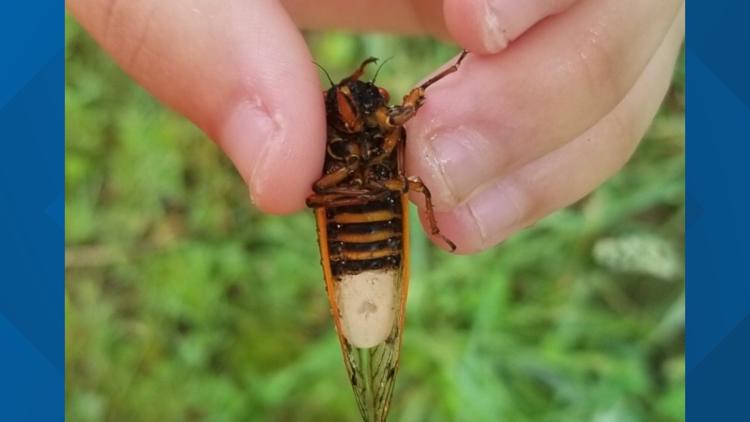WASHINGTON D.C., DC — 2020 certainly has been a year to remember, if not one of the weirdest in recent memory. Now, researchers say they've discovered what they are calling 'zombie cicadas,' which have returned to West Virginia.
Scientists say the insects are under the influence of a psychedelic fungus called Massospora. The fungus has compounds like the ones found in hallucinogenic or "magic" mushrooms, a recent study published in PLOS Pathogens says.
How the fungus affects cicada behavior
According to the study, the effect the parasitic fungus has on the cicadas is not like that of behavior-modifying viruses like rabies. But, both are pathogens that "enlist" their host, while alive, to successfully transmit from the host to others.
Researchers at the University of West Virginia say the infected cicadas unknowingly trick other insects which leads to effective disease transmission. The Massospora causes infected male cicadas to move their wings in the way females do during a mating invitation. This tempts other male cicadas into being infected researchers say.
The findings from the study show that the infection leads to hypersexual behavior.
Brian Lovett, a co-author on the study said, “essentially, the cicadas are luring others into becoming infected because their healthy counterparts are interested in mating.” Lovett said, "the bioactive compounds may manipulate the insect to stay awake and continue to transmit the pathogen for longer.”
How the fungus eats away at the cicada
According to Lovett, the Massospora fungus eats away at the cicada's butt, abdomen and genitals and replaces them with fungal spores which wears away "like an eraser on a pencil," he says.
Lovett said, "when these pathogens infect cicadas, it's very clear that the pathogen is pulling the behavioral levers of the cicada to cause it to do things which are not in the interest of the cicada but is very much in the interest of the pathogen.”
A cicada, during its life, goes down into the ground to feed on roots for 17 years. During the 17th year it will come up to the surface to molt into an adult. Researchers know that cicadas can encounter the fungus when they emerge, but now it is believed that the cicadas may also encounter Massospora on their way down underground, as well.
Matthew Kasson, another co-author of the study said the cicadas also spread spores in another way too, "when they fly around or walk on branches." Kasson described the cicadas when they spread the spores this way saying, "we call them flying saltshakers of death, because they basically spread the fungus the way salt would come out of a shaker that's tipped upside down."
While the fungus is not believed to be seriously dangerous to the cicada population in the U.S. as a whole, it certainly is a wild B-horror movie scenario that will make you cringe. The Massospora fungus isn't believed to be dangerous to humans, nor able to spread from insect to human, researchers say.



